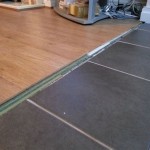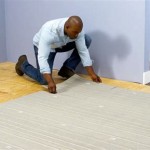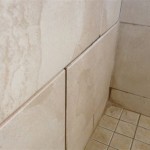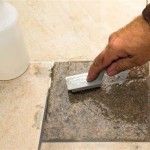How To Remove Silicone Sealant From Tiles Without Damaging It
Silicone sealant is a ubiquitous material used in various applications, particularly in bathrooms and kitchens, to waterproof joints and prevent leaks. Its flexibility and adhesive properties make it ideal for sealing tiles, bathtubs, sinks, and countertops. However, over time, silicone sealant can become discolored, cracked, or moldy, necessitating its removal and replacement. Removing old silicone sealant from tiles can be a delicate process; improper techniques can result in scratches, chips, or even cracked tiles. Therefore, understanding the correct methods and tools is crucial for a successful and damage-free removal.
The primary goal when removing silicone sealant from tiles is to detach it cleanly without harming the tile surface. This requires a combination of careful cutting, softening the sealant, and gentle scraping. Patience is paramount, as rushing the process greatly increases the risk of damage. Choosing the appropriate tools and materials is also essential, as some chemicals and abrasives can etch or stain tile surfaces.
Key Point 1: Preparing the Area and Gathering Necessary Tools
Before initiating any removal process, proper preparation of the work area is essential. This involves preventing damage to surrounding surfaces and ensuring safety for the individual performing the task. First, it is recommended to protect the adjacent surfaces that are not undergoing sealant removal. Masking tape or painter's tape can be applied along the edges of the tiles or fixtures to prevent accidental scratches or damage from tools or solvents. This simple step can save significant time and effort in cleaning up afterward.
Gathering the necessary tools and materials is the next crucial step. The following items are commonly required for the successful removal of silicone sealant:
- Sharp Utility Knife or Sealant Removal Tool: A sharp blade is essential for making precise cuts along the edges of the sealant. Specialized sealant removal tools, often featuring angled blades or ergonomic handles, can simplify the process.
- Plastic Scraper or Putty Knife: Plastic tools are preferred over metal to minimize the risk of scratching the tile surface. A plastic scraper can be used to gently lift and remove the softened sealant.
- Silicone Softener or Solvent: Various commercial silicone removers are available. These products are designed to break down the sealant's adhesive properties, making it easier to remove. Alternatively, mineral spirits or denatured alcohol can be used as solvents, although they may be less effective on certain types of silicone.
- Heat Gun or Hair Dryer: Applying heat can soften the silicone sealant, making it more pliable and easier to cut and peel away. A heat gun is more effective, but a hair dryer can be used as a safer alternative, especially for beginners.
- Clean Cloths or Paper Towels: These are necessary for wiping away residue and cleaning the tile surface after the sealant is removed.
- Spray Bottle with Water and Mild Detergent: This solution can be used to clean the tile surface after the removal process, removing any lingering residue or solvent.
- Safety Glasses and Gloves: Protecting eyes and hands from chemicals and sharp tools is crucial for safety.
Ensuring all these tools and materials are readily available before starting the removal process streamlines the task and minimizes interruptions.
Key Point 2: Cutting and Softening the Silicone Sealant
The initial step in removing silicone sealant involves carefully cutting along the edges of the bead. Using a sharp utility knife or a specialized sealant removal tool, score along both sides of the sealant where it meets the tile surfaces. It is important to apply consistent pressure and maintain a steady hand to avoid slipping and scratching the tiles. The goal is to sever the bond between the sealant and the tile without gouging the surface. Several passes may be necessary to ensure the sealant is completely detached along its edges.
After scoring the sealant, the next step is to soften it. Applying heat is one method for softening silicone sealant. Using a heat gun on a low setting or a hair dryer, direct the heat along the sealant for several minutes. The heat makes the silicone more pliable, making it easier to peel away. Be cautious not to overheat the sealant, as this can cause it to melt and become even more difficult to remove. The nozzle of the heat gun should be kept at a safe distance from the tile surface to prevent scorching or cracking.
Alternatively, a silicone softener or solvent can be used to break down the sealant's adhesive properties. Apply the softener or solvent liberally along the scored edges of the sealant. Allow the product to sit for the recommended time, as specified by the manufacturer. This soaking period allows the solvent to penetrate the silicone, weakening its bond with the tile. Some solvents may have strong odors, so ensuring adequate ventilation of the work area is important. Always wear gloves when handling these chemicals to protect skin from irritation.
For thick beads of sealant, a combination of heat and solvent may be necessary to achieve optimal softening. The heat can help the solvent penetrate deeper into the sealant, while the solvent further weakens the bond. Repeat the process of applying heat and solvent if the sealant remains resistant to removal.
Key Point 3: Removing the Sealant and Cleaning the Surface
Once the sealant is sufficiently softened, begin the process of removing it from the tiles. Use a plastic scraper or putty knife to gently lift the edge of the sealant. Work slowly and carefully, applying steady pressure to peel the sealant away from the tile surface. Avoid using excessive force, which can damage the tile or leave behind stubborn residue. If the sealant resists removal, reapply heat or solvent and allow it to soak for a longer period.
As the sealant is peeled away, some residue is likely to remain on the tile surface. This residue can be removed using a combination of scraping and solvent application. Use the plastic scraper to gently scrape away any large pieces of residue. For stubborn residue, apply more silicone softener or solvent to the affected area. Allow the solvent to sit for a few minutes, then wipe away the residue with a clean cloth or paper towel. Repeat this process as necessary until all visible residue is removed.
After removing the bulk of the sealant and residue, a final cleaning is necessary to prepare the tile surface for new sealant application. Fill a spray bottle with water and a small amount of mild detergent. Spray the solution onto the tile surface and wipe it clean with a clean cloth or sponge. This step removes any remaining solvent residue and ensures the surface is clean and free of contaminants.
Inspect the tile surface carefully for any remaining residue or damage. If any scratches or imperfections are present, they can be addressed with appropriate tile repair techniques. In some cases, a mild abrasive cleaner can be used to remove stubborn stains, but caution is advised to avoid damaging the tile's finish. Thoroughly rinse the tile surface with clean water and allow it to dry completely before applying new sealant.
Proper disposal of the removed silicone sealant and any used solvents is important. Sealant should be disposed of in accordance with local regulations. Solvents should be stored and handled safely, away from heat and open flames. Following these steps ensures a safe and environmentally responsible removal process.
In conclusion, removing silicone sealant from tiles without damage requires careful preparation, appropriate tools, and a patient approach. By following these guidelines, a successful and damage-free result can be achieved, preparing the surface for a fresh and effective sealant application.

How To Remove Silicone From Tiles A Step By Guide
How To Remove Silicone Sealant From Tile Glass Metal And Wood

How To Remove Silicone From Tiles A Step By Guide
How To Remove Silicone Sealant From Tile Glass Metal And Wood

How To Remove Silicone Sealant Daqiq Chimie Co

How To Remove Silicone Sealant From Tiles 100 Characters
How To Remove Silicone Sealant From Tile Glass Metal And Wood

How To Remove Silicone Sealant Weber

How To Remove Silicone Sealant Daqiq Chimie Co
How To Remove Silicone Your Guide Wd 40
Related Posts








